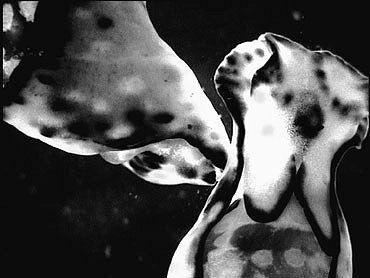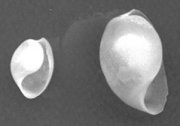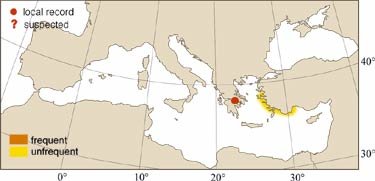

|
Relevant Synonyms
Misidentification
|
|
| photo: V. Roussis - E. Vardala-Theodorou / Coll. E. Mollo |
|
SHORT
DESCRIPTION
color :
shell translucent, whitish or creamy white. Background color of soft parts greenish white, with many patches of cream-whyte, and with some yellow blotches sprinkled over. Margins of the mantle purple-blue, contrasting strongly with the pale ground color of the animal. The purple blue line breaks up into a series of bluish spots in the anterior margin of the head. A large bluish spot separate the two eyes. Some dark purplish blue spots are also visible beneath the shell.
common size :
animal size from 5 to 15 mm, shell up to 10 mm. |
DISTINGUISHING CHARACTERISTICS
BIOLOGY / ECOLOGY
habitat :
in the Red Sea it has been found amongst coral rubble in shallow waters. In Greece and Turkey, usually seen at night between 15-30 m of depth on rocky surface covered with algae. |
|
1st
Mediterranean record
|

|
|
DISTRIBUTION
|
ESTABLISHMENT SUCCESS
speculated reasons for success :
|
|
|
MODE OF
INTRODUCTION |
IMPORTANCE TO
HUMANS |
|
KEY
REFERENCES
|
|
|
 Haminea cyanomarginata Heller and Thompson, 1983
Haminea cyanomarginata Heller and Thompson, 1983